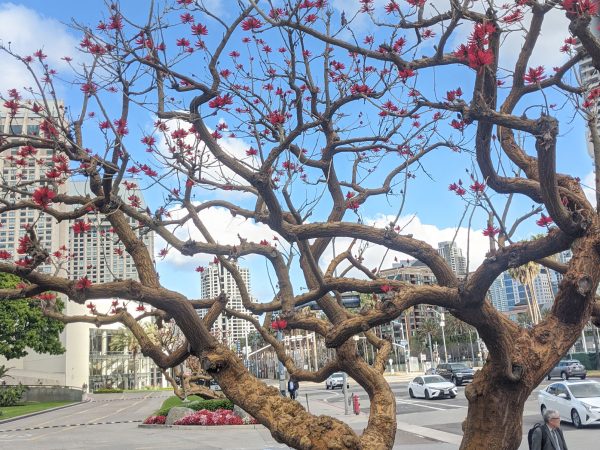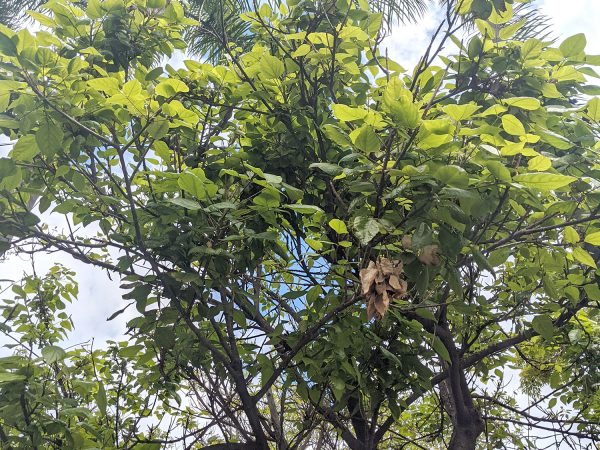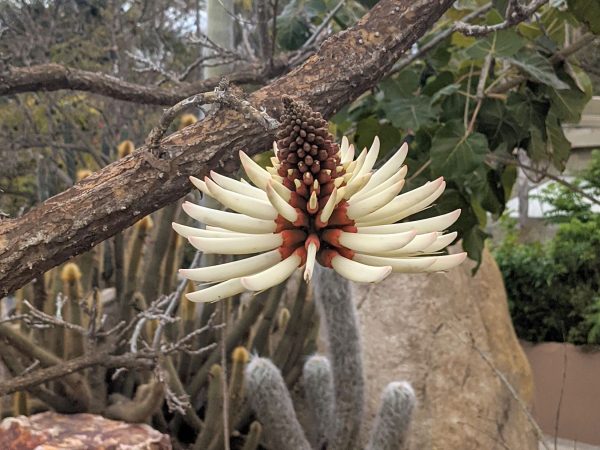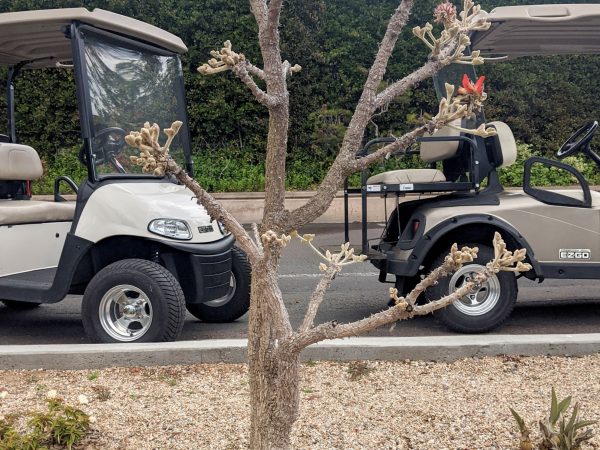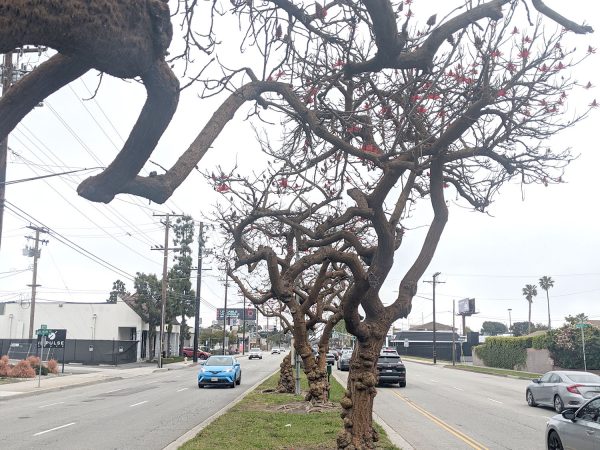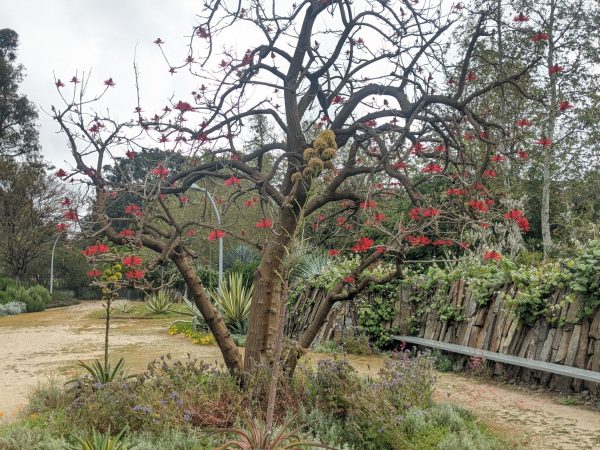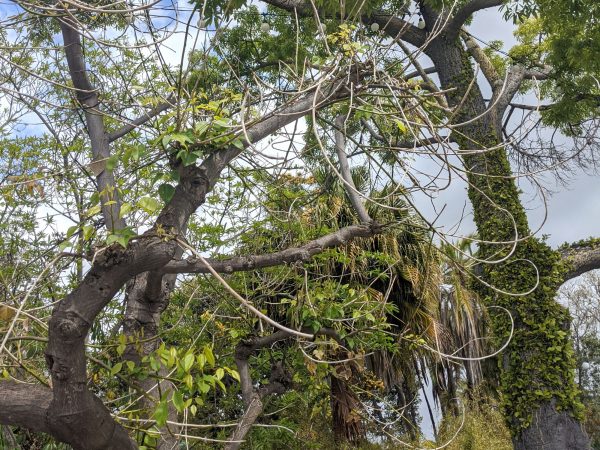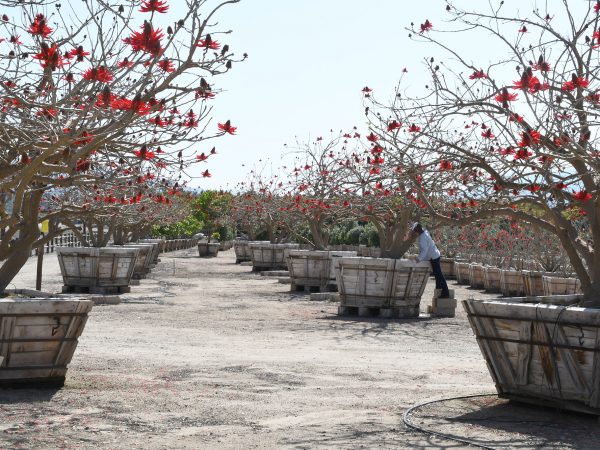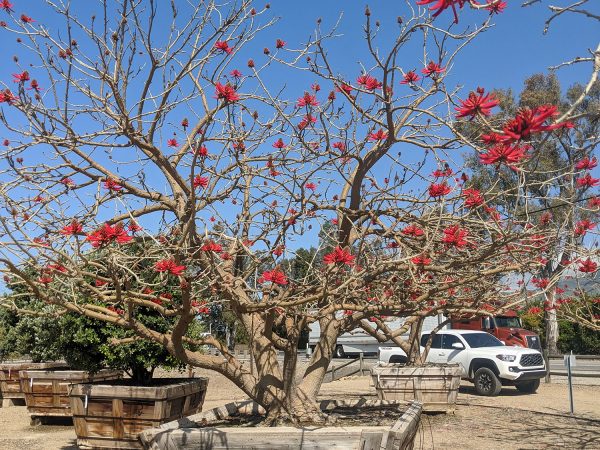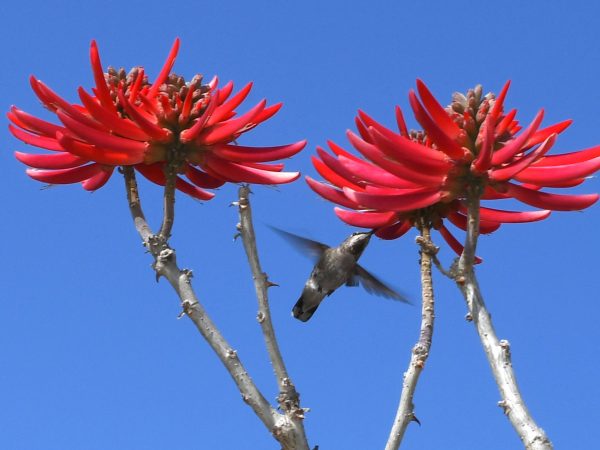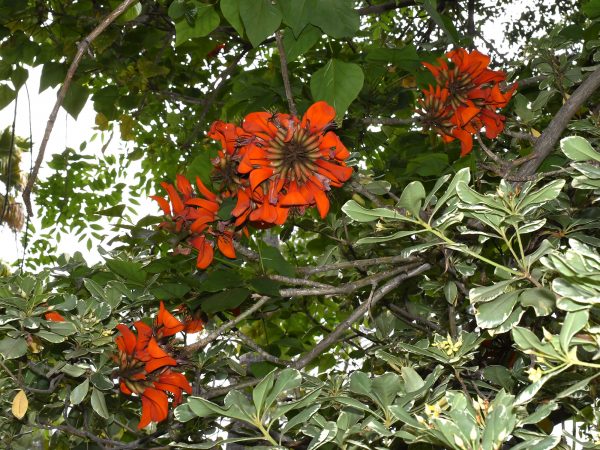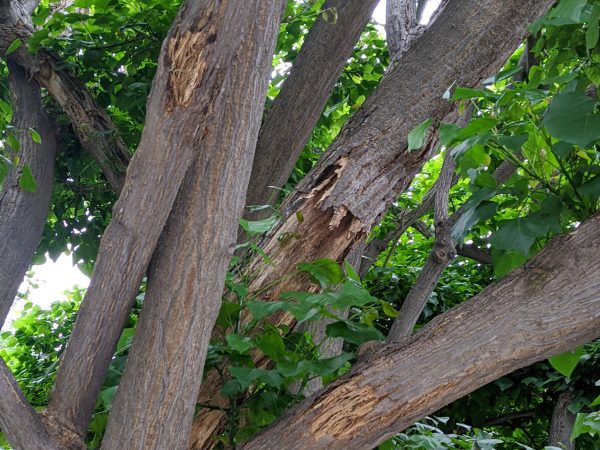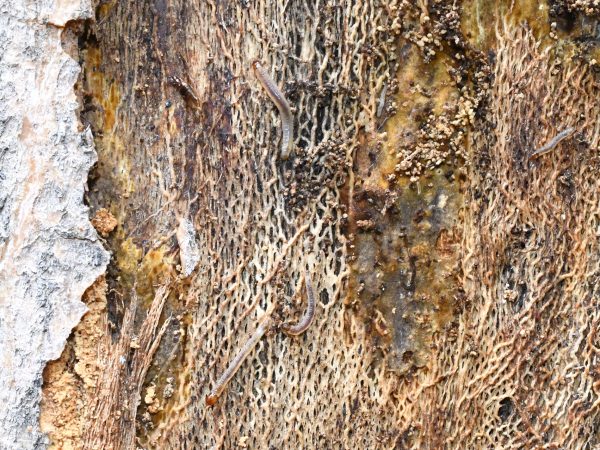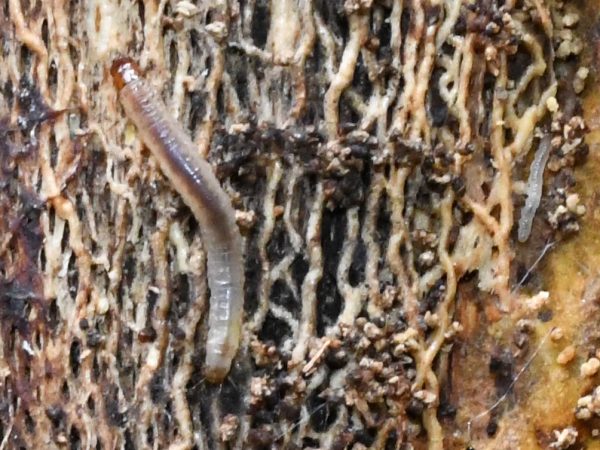I have been working on moths known as Erythrina Stem Borer (or twig borer) since 2010, which turned out to be several similar species with similar biologies found around the world. Suddenly, and rather unexpectedly, the moths have become a major horticultural pest in southern California, where Erythrina (aka Coral Trees) are used as landscaping trees. Their prominence is such that they are the “official tree” of the city of Los Angeles (even though they are not native).
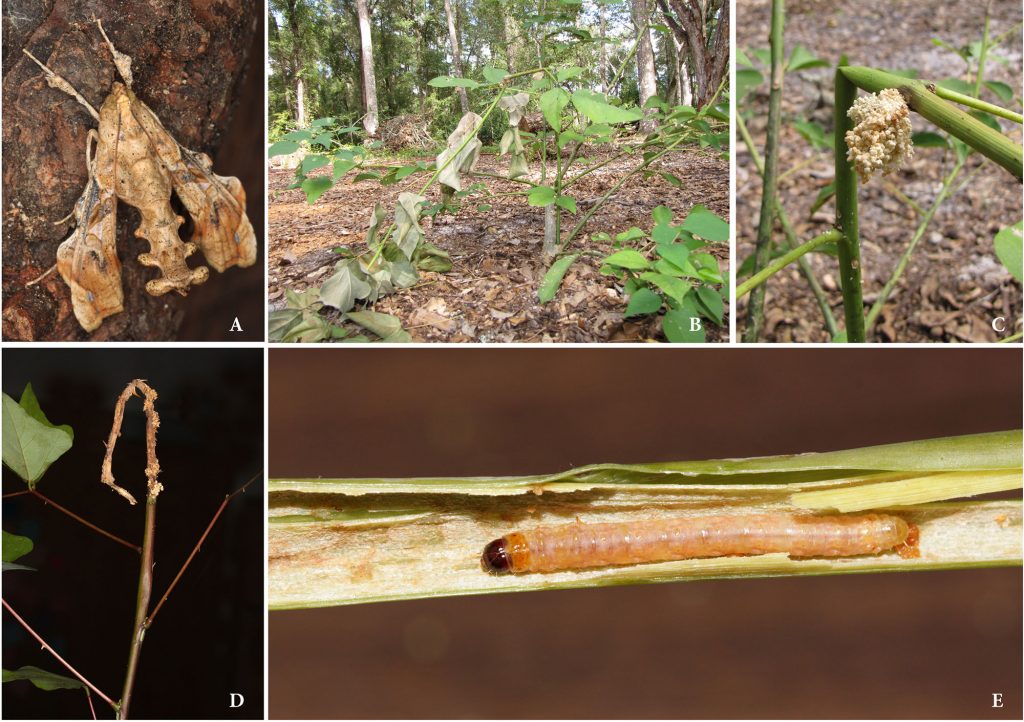
In fact, the very reason why these trees are so popular is that there was previously no Erythrina borer in southern California. In Florida, where conditions are favorable, the moth is very common on the native E. herbacea (aka Coral Bean), and so, as anyone who tries to grow exotic coral trees here will soon discover, the moth makes it impossible to grow. As I have been publishing papers on the biology and taxonomy of Erythrina-feeding moths for over a decade, I have been repeatedly contacted by Californian horticulturalists, arborists and homeowners with questions about how to deal with the infestations. Hence, I decided to investigate and visited California.
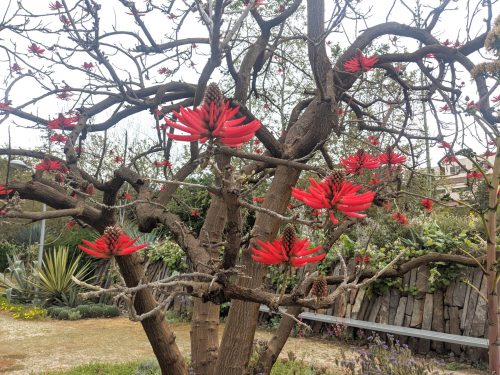
During the trip, I visited Los Angeles County Natural History Museum and confirmed that there are no historical records from southern California, but there are some from Baja California and other states in Mexico, and from Arizona, where the Western Coral Bean (E. flabelliformis) also occurs. Previously, I, together with my collaborators from University of Texas, found (using whole genome sequencing) that the pest population in southern California has arisen from these neighboring states of Arizona and Baja California. In fact, together with the pest population, these populations represent a separate taxon, which we recently named T. meticulosalis occidentalis Sourakov & Grishin, 2022.
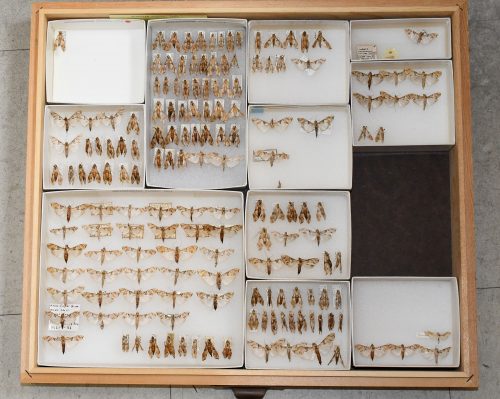
So, why did the moth suddenly become a pest? How wide has it spread in Southern California? What has changed in the last decade that it has become so prevalent? And what can people do about it?
To answer these questions, I contacted Dr. John Kabashima (emeritus consulting horticultural entomologist, University of California Cooperative Extension), and together we visited the San Diego Zoo where they have an impressive collection of living Erythrina species – over 60 species –from around the world. I also met with Fleur Nooyen, the arborist and landscape designer with whom I have been corresponding about the moth problem, and we visited one of the largest nurseries in California, where they grow Erythrina trees for sale (Devil Mountain Wholesale Nursery in Fillmore).
 Coral Tree, San Diego, California
Coral Tree, San Diego, California Erythrina tajumulcensis, Collection of San Diego Zoo
Erythrina tajumulcensis, Collection of San Diego Zoo Erythrina coralloides 'bicolor' in the colleciton of San Diego Zoo
Erythrina coralloides 'bicolor' in the colleciton of San Diego Zoo Erythrina latissima in the collection of San Diego Zoo.
Erythrina latissima in the collection of San Diego Zoo. Coral Trees, Long Beach, California
Coral Trees, Long Beach, California Coral Tree, Los Angeles
Coral Tree, Los Angeles Erythrina x bidwillii with damage to shoots, San Diego
Erythrina x bidwillii with damage to shoots, San Diego Potted Erythrina trees, Devil Mountain Nursery
Potted Erythrina trees, Devil Mountain Nursery Potted Erythrina trees, Devil Mountain Nursery
Potted Erythrina trees, Devil Mountain Nursery Humming bird feeding on Coral Tree flower
Humming bird feeding on Coral Tree flower
The spread of Erythrina moths is greatly assisted by human mediated transport of potted plants. Moths are virtually impossible to detect as they are borers until a certain stage, so it is hard to prevent this spread. The prevalence of suitable Erythrina plants (which are virtually everywhere) has finally reached the level that has allowed for the establishment of a self-sustaining moth population. Adding the wide variety of species of Erythrina to the mix of landscape plants, especially certain species such as E. X bidwillii and E. sykesii that produce abundant shoots for caterpillars to feed, allows the moth to thrive. I strongly suspect that in the past, when the moth made it to this part of the state, it probably very rapidly ran its course locally, and then the prolonged California droughts probably did not let it continue breeding. With landscape trees in close proximity to each other, frequently well irrigated, and fertilized, combined with the perfect dispersal mechanism in the form of the plant trade, the moth is in southern California to stay.
But, there is a silver lining: at the Devil Mountain Nursery, the employees developed a technique for controlling the moths using both systemic and local pesticide applications combined with mechanical removal of infested shoots. Hopefully, their expertise can be used by others.
An unexpected twist – Banana Moths feeding on Erythrina trunks
Another interesting issue that has arisen is attacks by moths (that were presumed by horticulturalists in the L.A. area to be the Erythrina Borer) on the trunks of mature Coral trees, leading to disastrous consequences for the trees. As was described to me, whole mature trees would fail after heavy damage to the wooded part with massive caterpillar presence at the affected sites. Together with Fleur Nooyen and John Kabashima, we examined trees at a property east of L.A. which is heavily landscaped with E. variegata (the Indian Coral Tree) that suffered significant moth damage. We investigated the issue and found that these are completely unrelated moths – they turned out to be the so-called Banana Moths (Opogona sacchari, Tineidae) originally from Asia. This was also confirmed by DNA sequencing.
While, as the name suggests, these moths are primarily attacking palms, they are opportunistic feeders. What seems to be happening is that, due to pruning that is not accompanied by fungicide spraying, the trees get canker infections, as was determined by John Kabashima when we examined the Indian Coral Trees. Then the weakened tree invites an attack from some beetle whose identity needs to be discovered (it is possible that this is invasive Polyphagous Shot Hole Borer (Euwallacea sp., Curculionidae) that has been a real menace for the landscaping industry in California, but no specimens have been collected). Then the moth infestation starts where the sap is oozing from the tree, perhaps leading to fungus growth and rot. While the Banana moth caterpillars are probably just secondary or even tertiary pest in this situation, it is possible these, sometime numerous, caterpillars worsen the condition of the wound by creating a silk webbing under the bark, keeping the area moist and contributing to fungal growth. At least the spot treatment by pesticides of some on the wounds a week prior to our visit seem to have led to drying and initial healing of the wound.
ESB Moth spread and control
During the trip, I also visited the botanical garden at UC Riverside and found two species of Erythrina there – one of them heavily damaged by the moths. This (new for the Riverside County) record will hopefully permit UC Riverside to proceed with development of control strategies for the moth, which requires captive breeding of moths on site, something that could not have happened until the moth was found in that county. Applied research entomologists are very resourceful people, and, given time and money, tend to find solutions for pest problems.
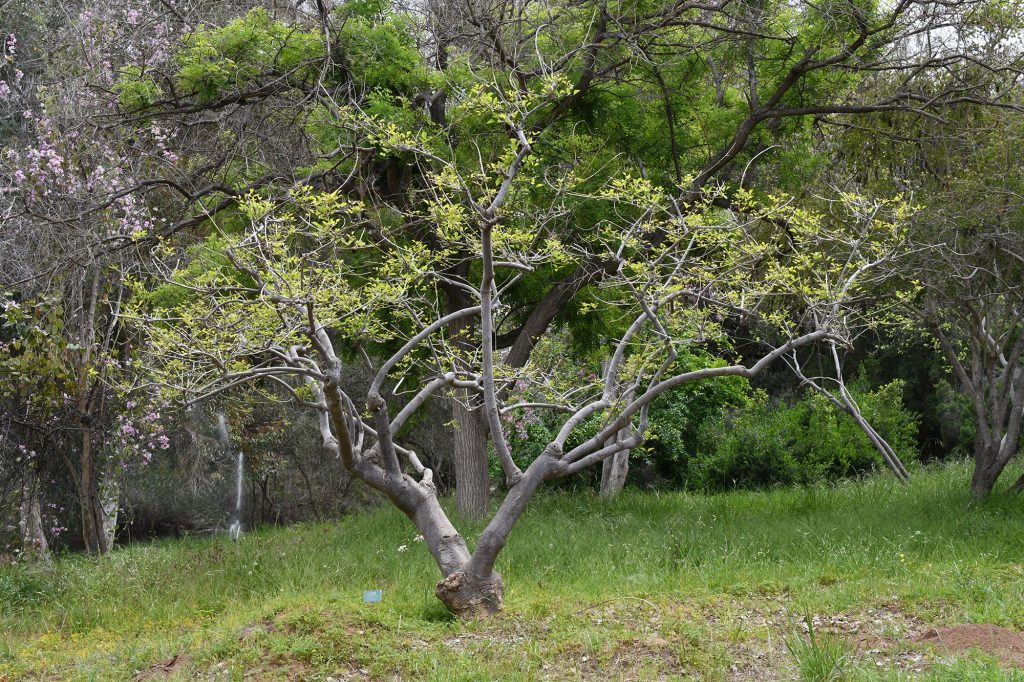
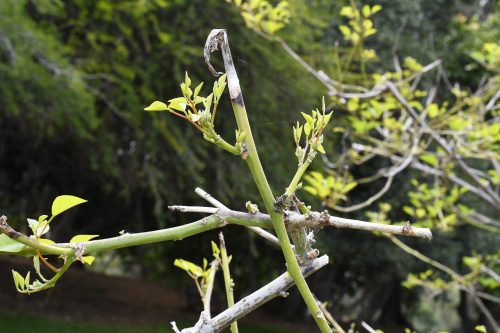
My trip to L.A. was sponsored in part by the Florida Museum of Natural History Travel Award program.
